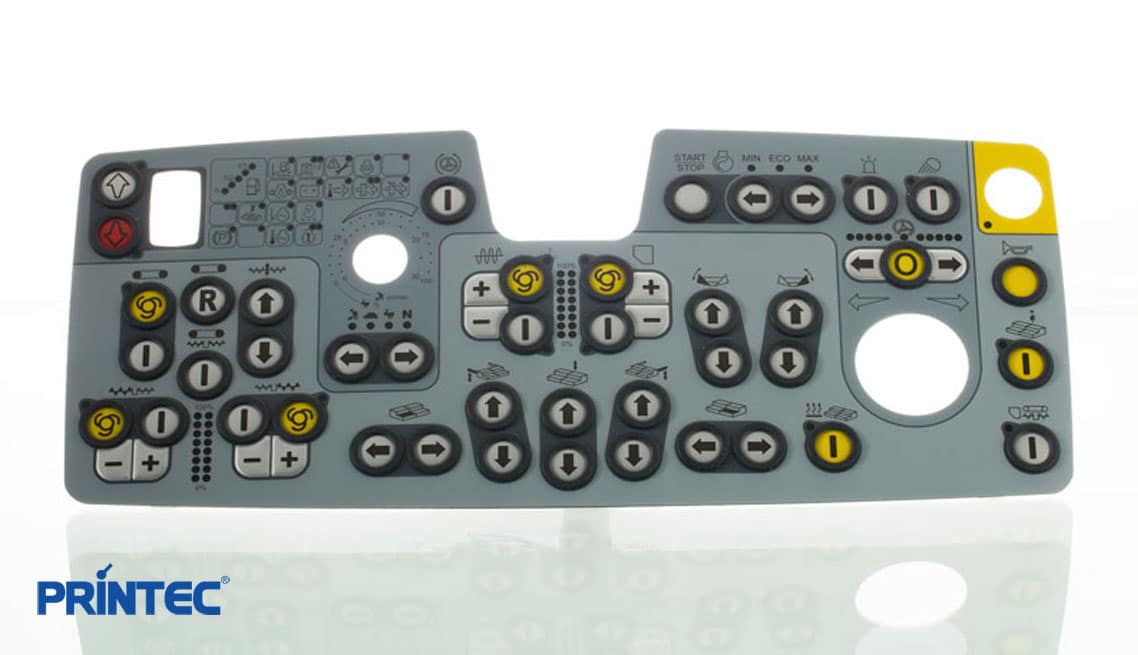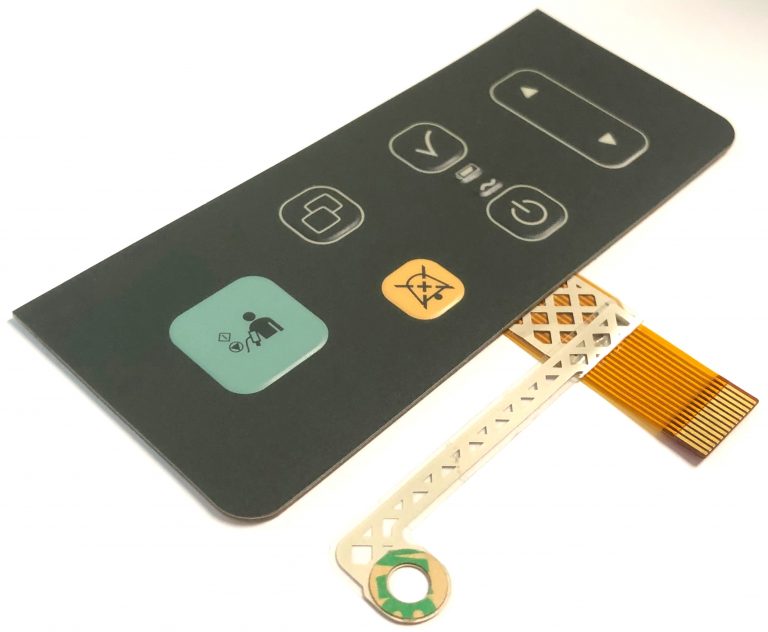You’ll see the difference when collaborating with a top-tier membrane switch manufacturer.
You’ll see the difference when collaborating with a top-tier membrane switch manufacturer.
Blog Article
All Regarding Membrane Switch: Recognizing Its Style and Performance
When you think of the control user interfaces in modern-day tools, membrane buttons usually come to mind. These elements are greater than just switches; they mix design and capability effortlessly. Comprehending just how they function and what makes them reliable can change your point of view on everyday electronic devices. There are subtleties to their layout and efficiency that you could not be mindful of. Let's explore what sets membrane switches over aside from other control systems.
What Are Membrane Layer Buttons?

Membrane layer buttons can also be tailored regarding shape, size, and graphics, allowing manufacturers to develop distinct interfaces customized to details items. Generally, membrane buttons play a significant role in improving user experience across a broad array of applications.
Just How Membrane Layer Switches Over Work
When you press a key on a membrane layer switch, it activates a simple yet effective mechanism. The leading layer, typically made of versatile product, presses down onto a conductive layer beneath it. This activity bridges the void in between conductive traces, finishing an electrical circuit. As quickly as the circuit closes, it sends a signal to the gadget's controller, which interprets your input.
You'll see that the responsive responses differs based on the button layout, supplying either a soft click or a much more obvious reaction. As soon as you launch the key, the membrane go back to its original placement, resuming the circuit and stopping the signal. This procedure occurs virtually immediately, guaranteeing a responsive individual experience.
Membrane layer buttons are prominent due to their longevity and resistance to dust and dampness, making them ideal for various applications, from family appliances to clinical gadgets. Comprehending this procedure helps you appreciate their widespread use.
Key Components of Membrane Buttons
Understanding the key elements of membrane layer buttons is essential for comprehending their performance and style. At the core, you'll find the visuals overlay, which offers the visual interface for users. Below that, there's a spacer layer that divides the circuit layers, guaranteeing that they do not make get in touch with until pressed. The circuit layer is where the magic occurs; it consists of conductive traces that finish the circuit when you press the switch. Another crucial aspect is the glue support, enabling the switch to follow surfaces firmly. The safety layer shields versus ecological factors and put on, prolonging the switch's life expectancy. Each element plays a substantial role in making sure trusted efficiency and customer communication. By comprehending these parts, you'll acquire insight right into just how membrane switches operate and their value in numerous applications.
Products Used in Membrane Switch Over Style
The efficiency and sturdiness of membrane layer switches over greatly rely on the materials made use of in their design. You typically run into polyester Check Out Your URL and polycarbonate as primary substrates as a result of their exceptional strength and adaptability. These materials resist scratches and chemicals, making them ideal for demanding atmospheres.
The conductive layers usually utilize silver or carbon, selected for their reliability and conductivity. membrane switch manufacturer. Silver provides premium efficiency, while carbon is a cost-effective option. For the overlay, you might consider a matte or glossy finish, depending on your aesthetic requirements and user experience
Make certain to choose adhesives that endure ecological aspects like temperature level and moisture. Choosing the best materials will certainly assure your membrane layer button stands the examination of time.
Design Factors To Consider for Membrane Switches
While creating membrane layer buttons, it's essential to consider various elements that affect their functionality and user experience. Start by concentrating on the format and button dimension; make particular they're user-friendly and simple to browse. Consider the tactile responses you wish to offer-- will users need an obvious click or a softer touch? In addition, consider the products you'll utilize, as they'll impact sturdiness and visual appeals.
Verify your style fits ecological elements, like wetness or temperature level variations, which can affect performance. By meticulously taking into consideration these aspects, you'll produce a membrane layer switch that improves functionality and satisfaction.
Applications of Membrane Switches
Membrane layer switches are flexible elements located in numerous applications, from industrial equipment to consumer electronics. You'll see their impact in machines that require sturdy interfaces and in tools that profit from streamlined layouts. Understanding these applications assists you appreciate the functionality and usefulness of membrane layer buttons in everyday technology.
Industrial Devices Usage
When you're looking to improve the functionality of commercial devices, membrane switches offer a reputable option that incorporates sturdiness with user-friendly design. These buttons are excellent for harsh environments, offering resistance to dirt, moisture, and chemicals. Accept membrane layer buttons to streamline your operations and boost overall efficiency.
Customer Electronic Devices Integration
In the domain name of consumer electronic devices, membrane layer buttons play an important function in boosting user communication and tool functionality. You'll discover them in devices like microwaves, remotes, and video gaming consoles, supplying a smooth method to interact with modern technology. Their sleek layout enables simple combination right into various products, making controls user-friendly and easy to use. With their capacity to include graphics and backlighting, you can enjoy a modern aesthetic that complements the tool's total appearance. Membrane layer buttons additionally ensure durability and resistance to dirt and dampness, expanding the lifespan of your electronics. By picking membrane layer buttons, you enhance not simply the this capability but likewise the design of your devices, making day-to-day communications smooth and delightful.
Benefits and Drawbacks of Membrane Buttons
While membrane switches supply a range of benefits, they likewise come with some drawbacks that you must think about. One substantial advantage is their compact style, making them optimal for space-constrained applications.

Nevertheless, there are negative aspects. Membrane buttons can have a shorter life-span contrasted to mechanical switches, specifically under heavy use. They can additionally be much less tactile, which could influence customer responses during operation. If damaged, fixing them can be tough and typically calls for complete substitute. Eventually, their level of sensitivity to extreme temperatures and ecological conditions might restrict their efficiency in particular settings. Balancing these benefits and drawbacks will certainly aid you establish if membrane buttons are the best fit for your project.
Regularly Asked Inquiries
How Much Time Do Membrane Layer Switches Usually Last?
Membrane switches over usually last in between 5 to ten years, relying on usage and ecological problems. You'll desire to assess elements like wear, direct exposure to wetness, and temperature level changes to gauge their durability efficiently.
Can Membrane Changes Be Customized for Particular Layouts?
Yes, you can tailor membrane buttons to fit particular designs (membrane switch manufacturer). You'll have the liberty to choose shades, shapes, and designs that match your task's requirements, ensuring they mix effortlessly with your overall aesthetic
What Is the Price Array for Membrane Layer Change Manufacturing?
The expense array for membrane button production generally drops in between $1 and $10 per unit, depending on aspects like design complexity, amount, and materials. You can get quotes from makers to find the most effective option.

Are Membrane Layer Switches Over Water-proof or Resistant?
Membrane layer switches can be designed to be water resistant or resistant, relying on products used and building techniques. If you require them for from this source wet settings, ensure you specify those demands during the layout procedure.
Just How Do Membrane Layer Switches Over Compare to Conventional Buttons?
Membrane buttons are normally thinner and much more adaptable than traditional buttons, providing a smooth design. They're typically much easier to cleanse and integrate, yet may not provide the tactile comments you're made use of to with mechanical options.
Verdict

Report this page